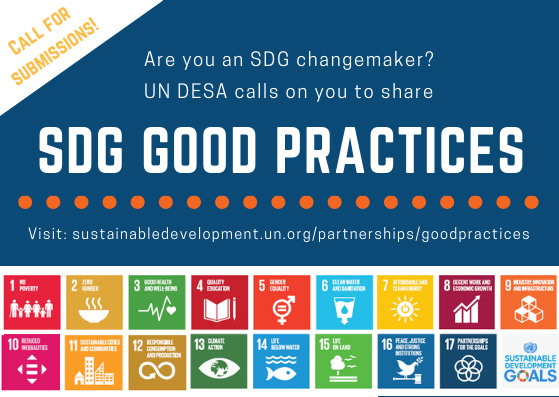Sustainable Urban Mobility Planning in Secondary Towns in Kenya
Description
UN-Habitat is promoting a people-oriented approach to mobility that focuses on improving access, safety and convenience for people. In Kenya, like in many cities in Africa transport planning is biased towards the movement of motorised vehicles despite the high proportion of non-motorised trips especially walking. For instance, trips by walking are estimated at 47% in Nairobi. A Sustainable Urban Mobility Plan (SUMP) was developed for Ruiru, a rapidly growing town in Nairobi Metropolitan Area. SUMP is a strategic plan designed to satisfy the mobility needs of people and businesses in cities and their surroundings for a better quality of life.
The objective of the SUMP was to identify how far the needs of existing and potential transport users are being met, and to close any gap between what is provided and what is needed.The aim was to demonstrate how fast-urbanizing smaller towns in the vicinity of larger cities can benefit from a better planned approach to improve accessibility of people to goods, services, places of employment, amenities and overall urban opportunities. A key feature of SUMP is that it is a participatory and consensus driven approach thus developed in participation with all stakeholders including citizens with an emphasis on marginalized and vulnerable groups, businesses, governments (county and national), transport service providers; road construction and maintenance agencies. <br />
<br />
A SUMP covers all modes and forms of transport in the entire urban setting, including public and private, passenger and freight, motorised and non-motorised, moving and parking. SUMP contributes to the SDGs by prioritising movement of people and goods within an urban region in a way that delivers the environmental, economic and social dimensions of sustainability: <br />
• SUMP ensures that all citizens of all classes, any social status and income level are offered transport options that enable access to key destinations <br />
and services by shifting towards more of a balance between all modes of transport;<br />
• Sump improves safety and security by catering for vulnerable road users such as disabled people, elderly, pedestrians and cyclists who are often <br />
marginalised in road transport improvement projects; and <br />
• SUMP contribute to environmental sustainability by prioritising public transport, walking and cycling which reduces air and noise pollution, <br />
greenhouse gas emissions and energy among key objectives.
The SUMP planning process followed the following progressive key steps- Launching of SUMP process; Defining the scope of the plan; Situation analysis and scoping of main issues; clarifying the development and coordination process including integration with other agencies; Developing and adopting SUMP proposals (common vision with stakeholders); Setting priorities and measurable targets and interventions; Agree on budget allocation or partnerships; Building implementation monitoring and evaluation framework; Ensure proper communication with stakeholders; and Learn the lessons. The SUMP Planning Process is attached.
The County Government of Kiambu planners, engineers and decision makers were trained to undertake SUMP which is a participatory process. An immediate action after adoption of SUMP (Step 5) proposals was for the County Government to establish a committee to take up subsequent activities such as building implementation monitoring and evaluation framework of the SUMP.
Building on the SUMP work and with the objective of improving safety and promoting equitable access for all road users, UN-Habitat supported the County Government of Kiambu to develop improved street designs in central Ruiru where there is a hive of transport activities. The objective of this was to provide better facilities for walking, cycling, and public transport. A holistic approach to street design, incorporating mobility elements such as footpaths, cycle tracks, carriageways as well as additional elements such as trees, bus stops, street furniture and organised vending spaces in an integrated design was followed. The street designs were based on public participation and scientific assessment of needs and behaviour of street users. Lessons from the street design activities in Ruiru town as well as from a similar initiative in Kiambu town informed a publication “Streets for Walking and Cycling: Designing for Safety, Accessibility and Comfort in African Cities 2018”. The publication highlights good practices and street design techniques for improving universal access. Emphasis is on making streets safe, accessible and comfortable for pedestrians and cyclists. This publication has been disseminated at various workshops and conferences. The publication is available on https://unhabitat.org/streets-for-walking-cycling-designing-for-safety-…
The SUMP introduced a new approach of local consultations that are well informed by good practices in other cities. The process, initiated training and capacity building for staff in Kiambu County and promoted collaboration between the local and national authorities. The Ruiru SUMP demonstrated how fast growing urban settlements facing numerous mobility challenges can benefit from a participatory policy approach to sustainable urban mobility. On-ground interventions such as dedicated pedestrian ways and cycling lanes, improved pedestrian crossings and improved intersections can greatly enhance access and mobility, creating equitable access for all road users. To widely disseminate the SUMP as an effective planning and policy tool a national consultative meeting that was attended by stakeholders and policy makers from different counties of Kenya was conducted in March 2018 before closure of the project.
“Streets for Walking and Cycling: Designing for Safety, Accessibility and Comfort in African Cities 2018”. The publication highlights good practices and street design techniques for improving universal access. Emphasis is on making streets safe, accessible and comfortable for pedestrians and cyclists. This publication has been disseminated at various workshops and conferences. The publication is available on https://unhabitat.org/streets-for-walking-cycling-designing-for-safety-…
SDGS & Targets
Deliverables & Timeline
Resources mobilized
Partnership Progress
| Name | Description |
|---|
Feedback
Action Network


Timeline
Entity
Region
- Africa
Geographical coverage
Website/More information
Countries

Contact Information
Stefanie Holzwarth, Urban Mobility Unit
